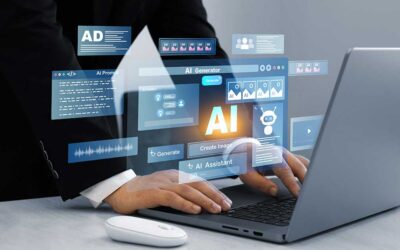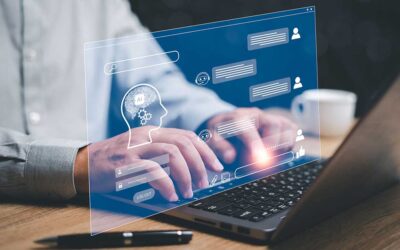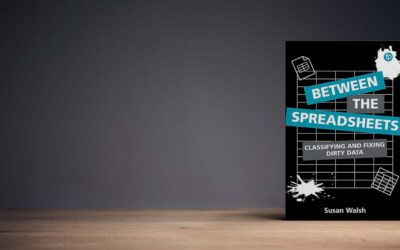Interview with the Author: Dr. V. Reyes, Saving Your Digital Past, Present, and Future
Lauren Hays
Dr. Vanessa Reyes wrote Saving Your Digital Past, Present, and Future available now from Rowman & Littlefield. My interview with her is below.
Please introduce yourself to our readers.
Dr. Vanessa Reyes is an Assistant Professor of Instruction for the School of Information at the University of South Florida and Editor-in-Chief of the Florida Libraries Journal and a Director-At-Large for the international honor society for Library and information studies. She holds a Ph.D. in Library and Information Science from Simmons College, an M.S. in Library and Information Studies from Florida State University, and a B.A. in English from Florida International University. Having worked in archives, legislative, university, and public libraries, she became interested in exploring the PIM (Personal Information Management) field when she noticed that researchers’ interest was sparked when they used appropriately organized and preserved personal collections for scholarly work. Her current research contributes to the emerging field of PIM, quantifying how individual users are organizing, managing, and preserving digital information. Dr. Reyes is finding ways to make a sustainable difference in how our digital heritage is preserved by examining trends in how individual users are managing and preserving their information.
Briefly summarize Saving Your Digital Past, Present, and Future.
The book is a primer to preventing that loss. It is an introduction to PIM with the basic premise that everyone needs to manage his or her digital information. This book introduces readers to the kinds of tools people most commonly use today. It considers the pros and cons of each of these tools. This book covers the concepts associated with preserving and managing personal digital information. Visual and textual examples illustrate how to use best practices to ensure the longevity of information while considering current solutions to the problems associated with personal information loss.
Why did you decide to write this book?
I decided to author the book because I noted there was a need to preserve our personal digital heritage. Our personal information documents our identity, our stories, and who we are. This was relevant three years ago when I wrote the book, and since then people have become increasingly preoccupied with curating their online lives. It is inevitable that people will start to think about the digital legacy they leave behind and want to make their wishes known. For this reason, I am now also writing another book covering digital estate planning using personal information management case studies and concepts. Information professionals, educators, students, and the public interested in learning the process of maintaining their digital life at any stage of life will buy the book in preparation for the digital afterlife. I am grateful for my book editor Charles Harmon’s support; he has been instrumental in the process of sharing the value of our personal archives.
What are two things you hope all readers take away from reading the book?
This book is for anyone who wants to learn how to manage their personal digital information, and for those who have questions about how to complete this process step–by–step. I wrote the book for a general audience and it is a good primer for those just starting to assess their personal digital information.
How do you see the saving of digital content changing in the future?
The saving of digital content is changing rapidly, and it all revolves around the choices one makes today about preserving personal digital records. This will affect how one’s digital afterlife is maintained, whether available or gone. While information institutions house and maintain information and make it accessible to users, individual users need the tools and support to know how to manage and preserve their content. For this reason, it is important to have an awareness that our digital content is not permanent.
Is there anything we can do to prepare for changes now?
To prepare for the changes, I recommend starting to make copies of everything kept in an online platform about you as it relates to your personal digital life. There is no guarantee that it will be there tomorrow.
Is there anything else you would like to share?
There is always the prospect of developing better tools and storage solutions for our personal information. These opportunities exist on the horizon, but one must also be aware of the complexities involved with our personal records, specifically digital copyright, culture, organization, technological tools, and maintenance as our records will be what remains to tell our stories. I hope my research can help fill the gaps that exist in how we preserve our memories and cultural heritage for future generations.
Lauren Hays
Lauren Hays, PhD, is an Assistant Professor of Instructional Technology at the University of Central Missouri, and a frequent presenter and interviewer on topics related to libraries and librarianship. Please read Lauren’s other posts relevant to special librarians. And take a look at Lucidea’s powerful integrated library systems, SydneyEnterprise, and GeniePlus, used daily by innovative special librarians in libraries of all types, sizes and budgets.
Never miss another post. Subscribe today!
Similar Posts
Balancing Human Oversight with AI: Tips for Special Librarians
Special librarians can use AI without losing expert control. Use this practical checklist to verify accuracy, bias, sources, licensing, and fit.
End-of-Calendar-Year Reflections for School Librarians
The end of the calendar year offers school librarians a chance to reflect on what’s working, make thoughtful adjustments, and plan for the year ahead.
Library Instruction: Learning Styles Are Out, Evidence-Based Practices Are In
For instructors and educators of all types, it’s vital to realize that evidence-based practices are more effective than catering to the myth of learning styles.
Interview with Susan Walsh:
Dirty Data, AI, and the 2nd Edition of “Between the Spreadsheets”
Author Susan Walsh discusses the new edition of “Between the Spreadsheets,” sharing insights on fixing dirty data, AI’s impact, and her COAT framework.




Leave a Comment
Comments are reviewed and must adhere to our comments policy.
0 Comments